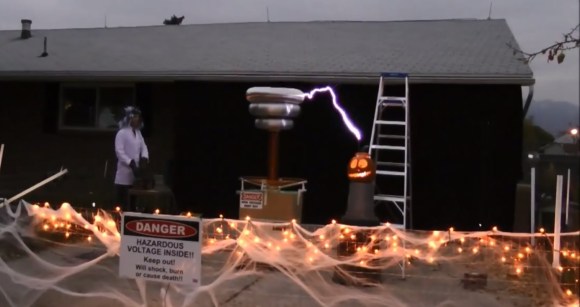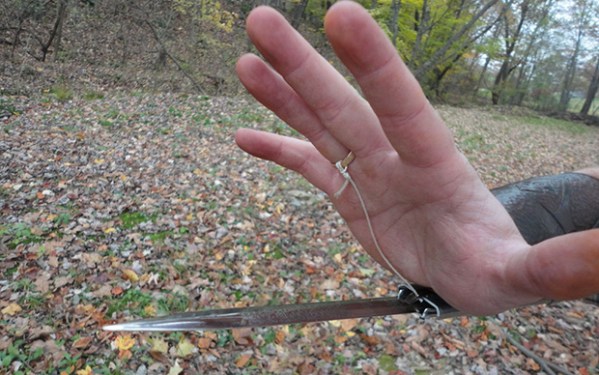
[JJ Dasher] is back again this year, shocking some pumpkins! (Volume warning). We featured [JJ] two years ago for his Halloween candy shocking Tesla coil. He apparently has been busy in his mad scientist laboratory doing some upgrades. This year his coil is producing 5 foot long streaming arcs!
[JJ’s] Tesla coil is a uses two microwave oven transformers as a power supply. He also uses an Asynchronous Rotary Spark Gap (ASRG). As the name implies, a rotary spark gap uses a motor to turn a rotor. At certain points in the rotation, the rotor creates a small enough gap that a high voltage spark can jump across, energizing the primary coil. This idea is similar to an automotive ignition system distributor. [Pete] gives a great example of an ASRG in this video. Most ASRG based Tesla coils use the small motor to spin up the spark gap. Varying the speed of the motor creates the characteristic “motor revving” noise heard in the final arcs of the Tesla Coil.
[JJ] made things a bit more interesting by installing a couple of fluorescent bulbs inside a pumpkin near the coil. The coil lights them easily, and they glow even brighter when the pumpkin is struck. Still not satisfied, he also donned his grounded chainmail gloves and drew the arc to himself. We always love seeing people safely taking hits from massive Tesla coils, but this definitely falls under the “don’t try this at home” banner.
Continue reading ““Professor Kill A. Volt” Shocks Pumpkins With His Tesla Coil”
















